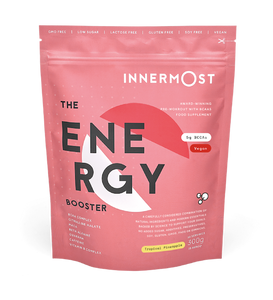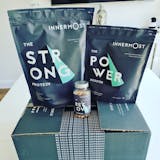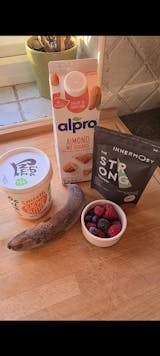It’s pretty, it’s pink, and it makes your food taste oh-so-much better. If you’re not sprinkling pink Himalayan salt onto your scrambled eggs, salads and rice bowls, you’re missing out not only on its incredible natural flavour but a myriad of possible health benefits.
Many people claim that this natural salt is packed full of essential minerals and elements, and is healthier than standard table salt. While little research exists, it’s definitely a product which has qualities worth exploring.
Apart from anything else, there’s no denying that a tiny bowl of blushingly pink salt on your dining table looks far prettier and more interesting than a plastic container of bog standard white salt.
What is pink Himalayan salt?
Salt is a mineral which consists almost exclusively of sodium chloride - 98% of salt is composed of sodium. While salt as a substance can be mined from underground salt mines, it can also be made by evaporating salt or sea water. The white table salt that’s a feature of many kitchens goes through a refining process before it reaches your fingertips ready to be sprinkled. This involves removing impurities and also removing any other minerals the salt may contain, adding iodine to help prevent iodine deficiency in humans and adding an anticaking agent to prevent clumping.
In contrast, pink Himalayan salt is an all-natural salt which is found exclusively in the Khewra Salt Mine near the Himalayas in Pakistan. One of the oldest and largest salt mines in the world, the pink salt found here is thought to have been deposited in the area millions of years ago when ancient bodies of water evaporated
Pink Himalayan salt is extracted by hand and purposefully processed in an extremely minimal way, which creates an unrefined, purely natural product free of additives and rich in minerals and trace elements. It’s this, in particular the iron content, which lends the substance its charming pink colour and delicious flavour. It’s estimated that this type of salt may contain as many as 84 different trace elements and minerals, in contrast to processed table salt which contains almost none.
Why is salt important?

Salt isn’t just important in regards to flavouring and seasoning your food. Humanity has used salt for hundreds of years to preserve foods, and it plays an important part in our culture. Where would we be without bacon, pickles and gravlax? None of these foods would be possible without salt, which preserves food, making it impossible for bacteria to grow and thus making foods last longer and stay fresh.
However, salt also plays a crucial biological function in our bodies. If you don’t eat enough salt, you die - it’s an essential part of our diet. Just some of the important biological functions it supports includes muscle contraction (think about that the next time you’re at the gym lifting weights), fluid balance and nerve conduction. It’s thought that too much sodium can lead to high blood pressure and heart disease, which is why people struggling with these symptoms are often advised to follow a low-sodium diet.
What are the benefits of pink Himalayan salt?
While the research behind the benefits of pink Himalayan salt has not yet been fully conclusive, there’s no doubt that its potential benefits are varied and fascinating. Studies have shown that the substance not only contains relatively common minerals such as calcium, potassium, magnesium and iron, it also contains rarer minerals including strontium and molybdenum. It also has less sodium than regular table salt. While the quantities of the minerals found in pink Himalayan salt are very small, it’s certain that they add to the appeal of this all-natural, minimally processed substance. And as salt is a crucial part of our diets regardless, it seems foolish to not use the kind of salt that could potentially have many benefits.
As well as using pink Himalayan salt in your food as would other salt, you can also use it as a cooking surface and use it to sear meat or vegetables, imparting delicious flavour to your food. You can find this pink salt in bath products, where it’s thought to soothe sore post-workout muscles and improve skin conditions. It’s also thought that pink Himalayan salt could help to improve air quality and assist with respiratory problems. Salt lamps, which cast a warm pink glow throughout a room, are popular and claim to remove pollutants from the air, and many people sing the benefits of spending time in man-made salt caves, as they are said to help with allergies and breathing problems and improve skin quality. While research on the scientific benefits have to catch up with popular opinion, sometimes there’s no harm in giving something a try and seeing if it helps you out.
























